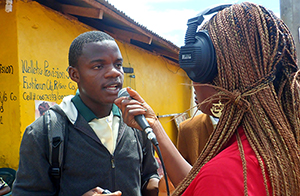SAFE Basic Training Curriculum for Media Practitioners and Social Communicators

In order to equip media practitioners and social communicators with the means to safely carry out their work, IREX’s Securing Access to Free Expression (SAFE) Initiative addresses safety through the lens of physical awareness, digital identity, and psychosocial care by providing trainings in Central America, Eurasia, East Africa, and the Middle East & North Africa.
This curriculum provides media practitioners and social communicators with the basic skills and knowledge needed to continue operating in closing spaces around the world and should be used as a resource to build solidarity among journalists and civil society leaders.
Promoting inclusion in training: The SAFE inclusion annex
The second edition of SAFE’s annex about making training inclusive is now available in Arabic, English, Bahasa Indonesia, and Spanish:
- Annex: Arabic (PDF, 3.8 MB)
- Annex: English (PDF, 1.7 MB)
- Annex: Bahasa Indonesia (PDF, 1.8 MB)
- Annex: Spanish (PDF, 1.7 MB)
The annex shares SAFE’s approach to ensuring equal access to training, addressing identity-based risks, and challenging harmful norms and stereotypes.
We published the first edition of the annex in March 2020. However, the COVID-19 pandemic transformed the operating environment for projects like SAFE and made questions of accessibility paramount, which prompted us to write the second edition.
We plan to publish the annex in additional languages: Amharic and Russian. Check back soon.
Purpose and scope of the curriculum
The purpose of the SAFE Basic Training Curriculum is to share the SAFE training methodology for use by media practitioners, social communicators, civil society organizations, and nongovernmental organizations, as well as others around the world working on journalist safety issues. To achieve this, SAFE harnessed the knowledge from the regional training teams and their nearly five years of experience. Based on this knowledge, SAFE compiled this Basic Training Master Curriculum to deliver security trainings around the world.
SAFE’s unique training curriculum integrates physical safety tools, safe digital practices, and psychosocial care with adult learning principles to enable media practitioners and social communicators to better protect themselves and their sources, as well as provide self-care for long-term health. In order to expand knowledge of and access to this holistic approach, SAFE produced a curriculum outlining basic best practices within each of the three domains of physical safety, digital security, and psychosocial care, as well as instructions on how to provide training of each respective domain to those who may be in need.
Curriculum development and methodology
One important component of the SAFE Initiative is the development of a specialized training curriculum for holistic security trainings around the globe. To develop this curriculum, an extensive consultative process was initiated with each SAFE center in Central America, Eurasia, East Africa, the Middle East & North Africa, and South Asia. Each center had previously developed holistic training curricula that consisted of all three domains (digital, physical, and psychosocial), which was localized and culturally relevant according to the respective region.
The centers provided information about the most essential lessons that they covered in basic trainings. Based on the feedback received from the centers, common lessons were identified as part of the SAFE Basic Training standard curriculum and were then combined into a master version. Then, another round of consultation began in which the centers shared lesson plans and other training material used to deliver those essential lessons. Based on the feedback and lesson plans, the master curriculum was developed.